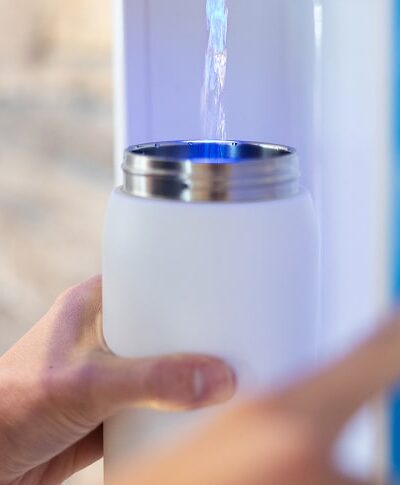Activated carbon filters contaminants from the water and air. It’s used mostly for water purification methods and to help reduce gas in the body. It’s made of coal granules, coconut shell, or other materials rich in carbon and causes pollutants in the water to stick in a process that’s called adsorption.
How is carbon activated? The chosen materials must be processed at a high temperature to increase the surface area and become more porous. It then captures and holds contaminants, such as metals, chemicals, and pesticides as the water flows through and is filtered. Fortunately, the body does not absorb activated carbon, which means that if present, it will eventually be eliminated without causing harm.
Ways Activated Carbon Is Used
Think of activated carbon like a magnet that attracts the elements in your tap water that are harmful. As the water makes its way through the pipe or tank, toxins are removed and the end result is purified water. In addition to water filtration, activated carbon has been known to help with:
- Healthier kidney function
- Reduced cholesterol levels
- Teeth whitening
- Skin treatment
Activated carbon, sometimes referenced as activated charcoal, has also been used as a remedy for poisoning by drug overdose since it decreases the amount of absorption in the body. In this type of emergency, it requires an immediate dosage and may not be effective for all poisoning cases. It’s not considered a cure-all or a solution that should be implemented without the assistance of a trained medical professional.
In fact, not all activated carbon applications are fully supported. Gas reduction and water filtration are the only two uses that are backed by science. Using a coconut carbon filter as part of the FloWater purification process is what helps the water taste fresh and crisp. Activated carbon filters help remove odors and any remaining particles following the first steps of filtration.
How Activated Carbon is Effective For Water Purification
The purified water process only takes a few minutes as water passes through an activated carbon filter. This takes significantly less time than reverse osmosis, another filtration process that can take up to several hours. For groundwater that’s being treated at the source, it takes longer for the water to be brought to the surface and treated. For consumer use, however, it’s much quicker because the filter is applied to tap water that has already been treated.
Using coconut husks as the carbon source gives FloWater water its unique, refreshing appeal to quench thirst and encourage people to stay hydrated. Any lingering odor or taste clings to the activated carbon and is filtered out. As part of a process that involves several filters, the activated coconut carbon filter is the final touch before being water is dispensed.
Plus, there’s no wait time for freshwater to be ready. The tank automatically refills after every use and it takes a mere 9 seconds to fill up a 24-oz. container with fresh water. This is a benefit for anyone who’s faced long lines at the gym, airport, or outdoor event waiting for their turn at the water fountain. Technology mixed with science and innovation is what shaped this new level of the water purification system and made it the best way to filter water.
Why Does Activated Carbon Matter?
Each region has its own water treatment process, some areas rank higher in quality than others. A report conducted by the Environment American Research and Policy Center and the U.S. Public Rights Group gave several states an “F” grade measured by how well the state’s water treatments prevent lead in school drinking fountain water.
Consumers can also search by state to view water quality standards set forth by the Environmental Protection Agency. Since water sources vary depending on the area of the country, certain states may face challenges with saltwater, contaminated groundwater, or other chemicals and pollutants due to natural causes that require more stringent filtration processes. The use of an activated carbon filter is like a final quality assurance check.
Even if regulations are met, depending on where your tap water comes from, there’s still a chance of bacteria, viruses, and pesticides ending up in the water, which is why the majority of the population drinks filtered water. The demand for clean water has led to an influx of plastic waste because of the skyrocketing sales of bottled water. Its popularity has reached the point of being a strain on the environment due to overflowing landfills and spillage into the ocean because of unrecycled plastic. This has put people in a difficult position on what type of drinking water to choose.
They want clean drinking water but not necessarily at the cost to the environment. The value of having a carbon activated filter as part of FloWater’s process is that it removes lingering contaminants and particles after regular water treatment and filtration and doesn’t require the use of plastic at all. This level of purification is becoming more available in public spaces, for organizations, and at events where it makes it easier to get cool, fresh drinking water at any time.
Sources:
https://clu-in.org/download/Citizens/a_citizens_guide_to_activated_carbon_treatment.pdf
https://www.healthline.com/nutrition/activated-charcoal#section2
https://marylandpirg.org/sites/pirg/files/reports/MDE%20GetTheLeadOut%20Mar19%20%281%29.pdf;https://www.epa.gov/wqs-tech/state-specific-water-quality-standards-effective-under-clean-water-act-cwa




